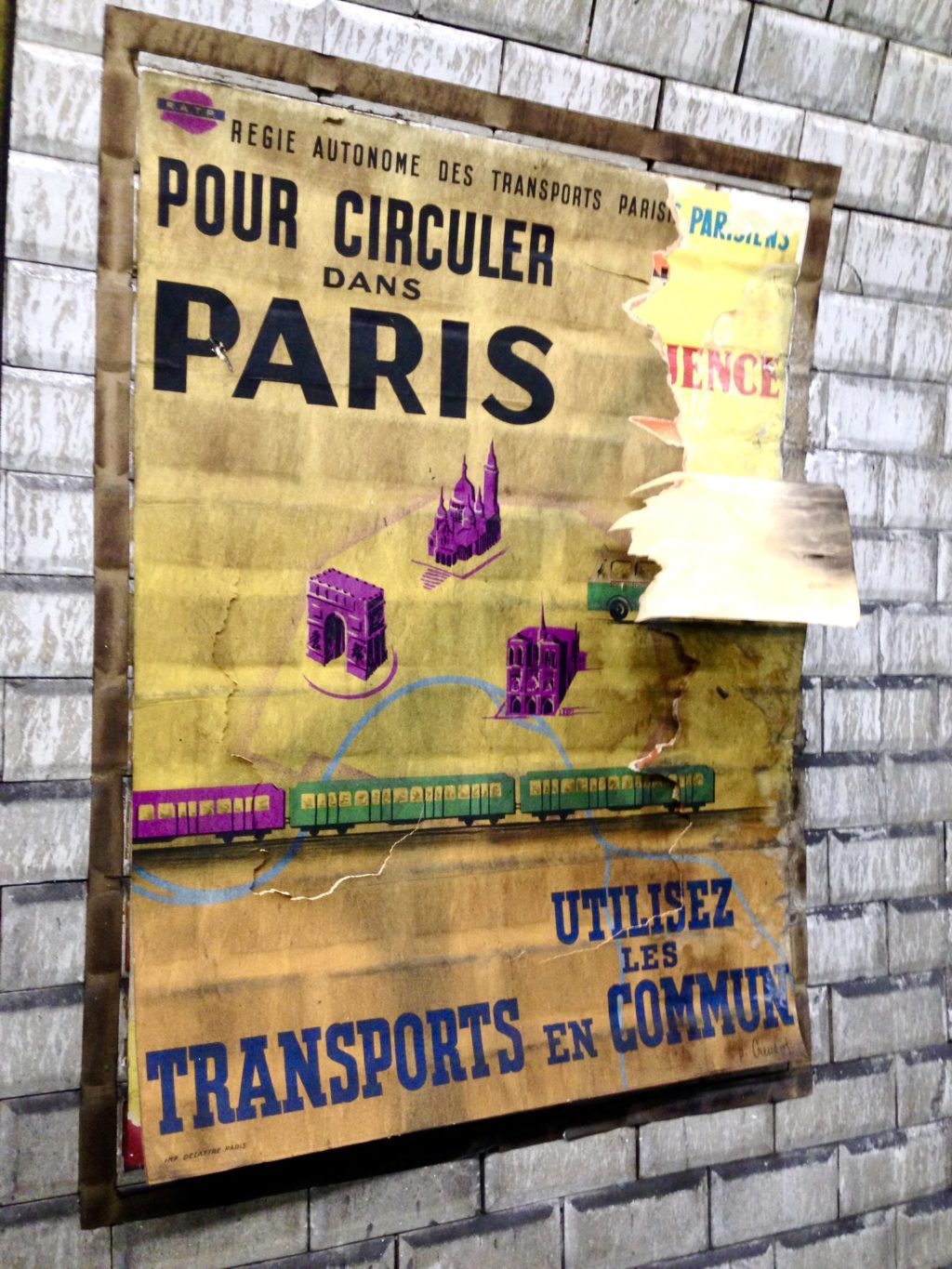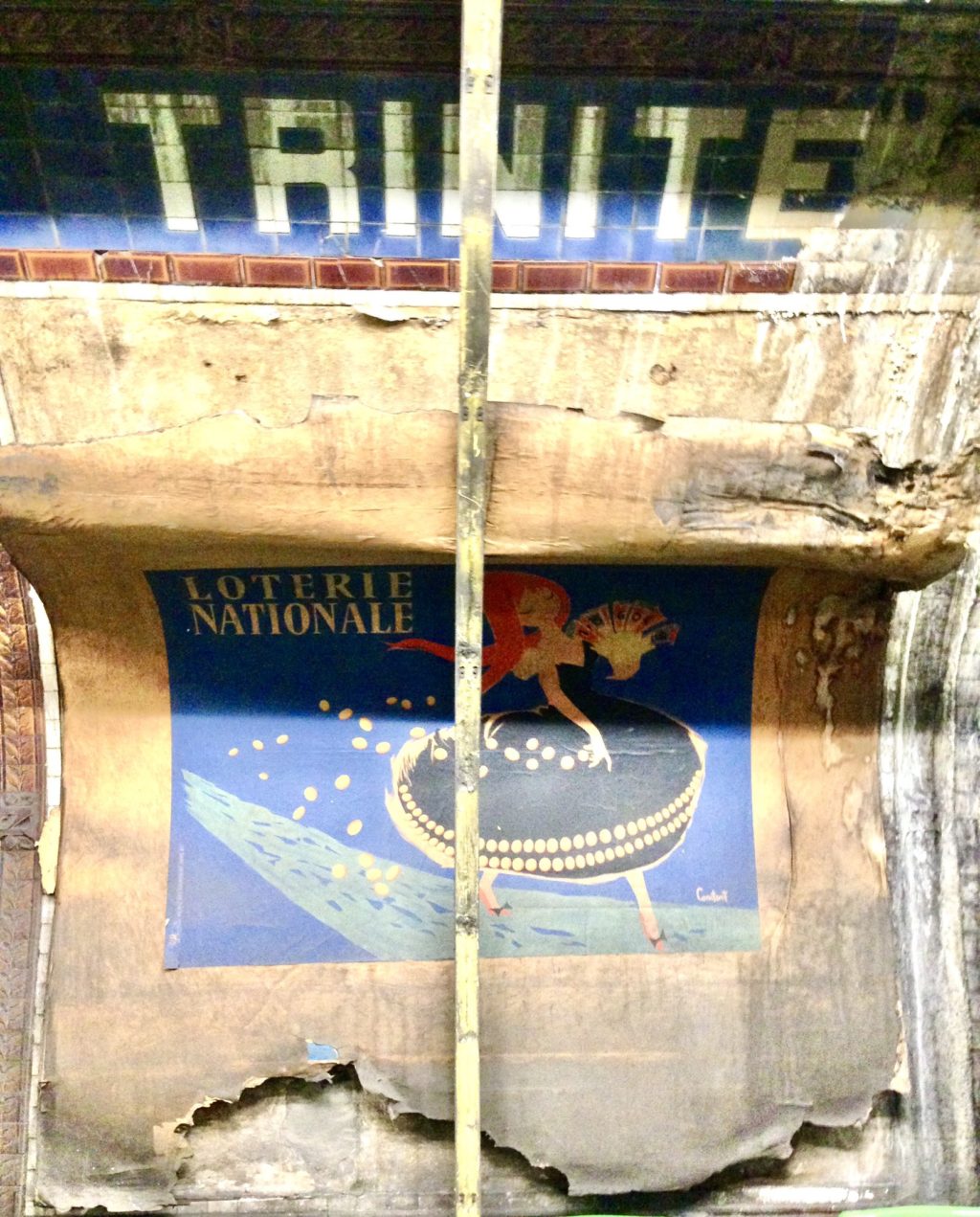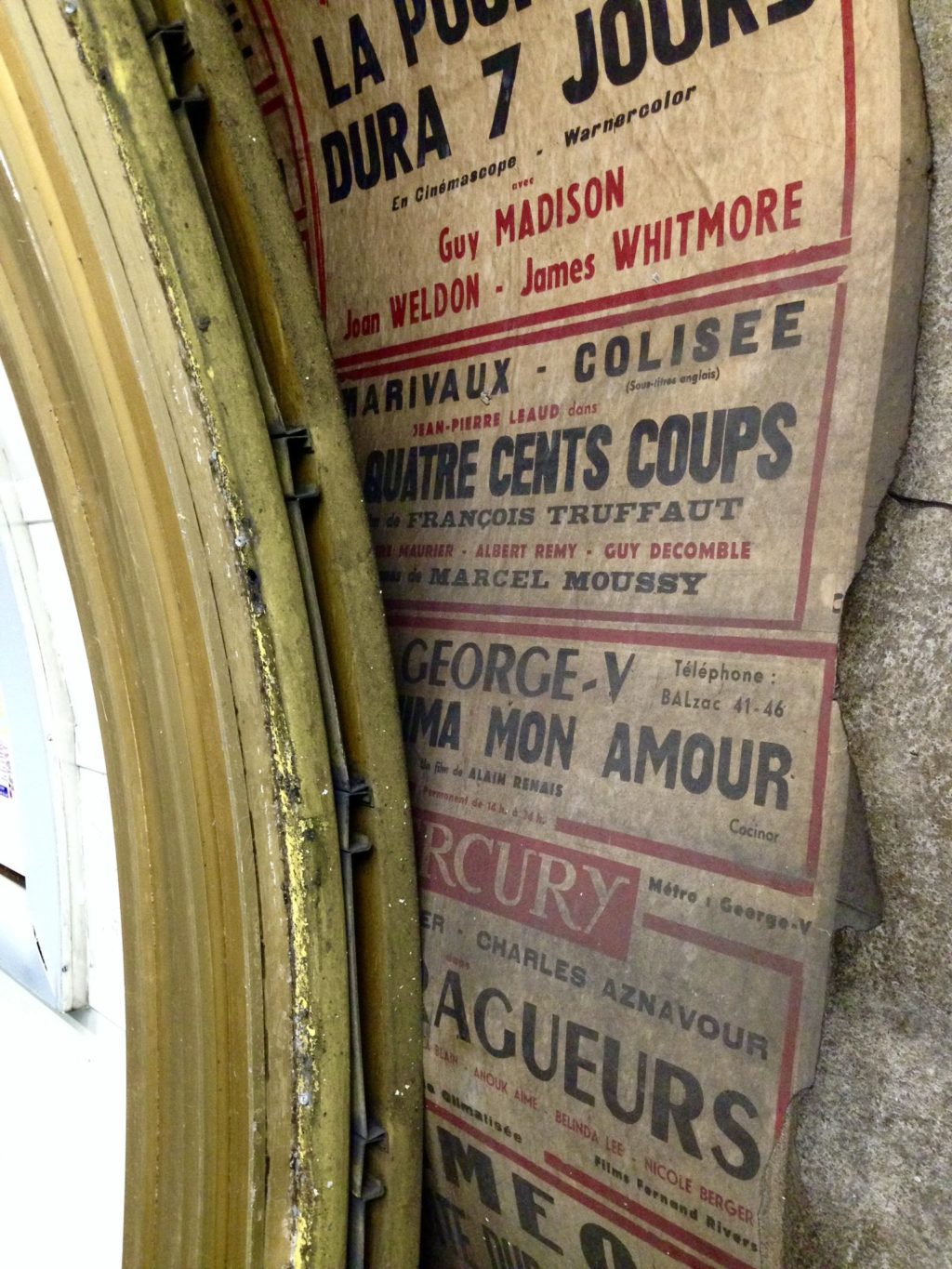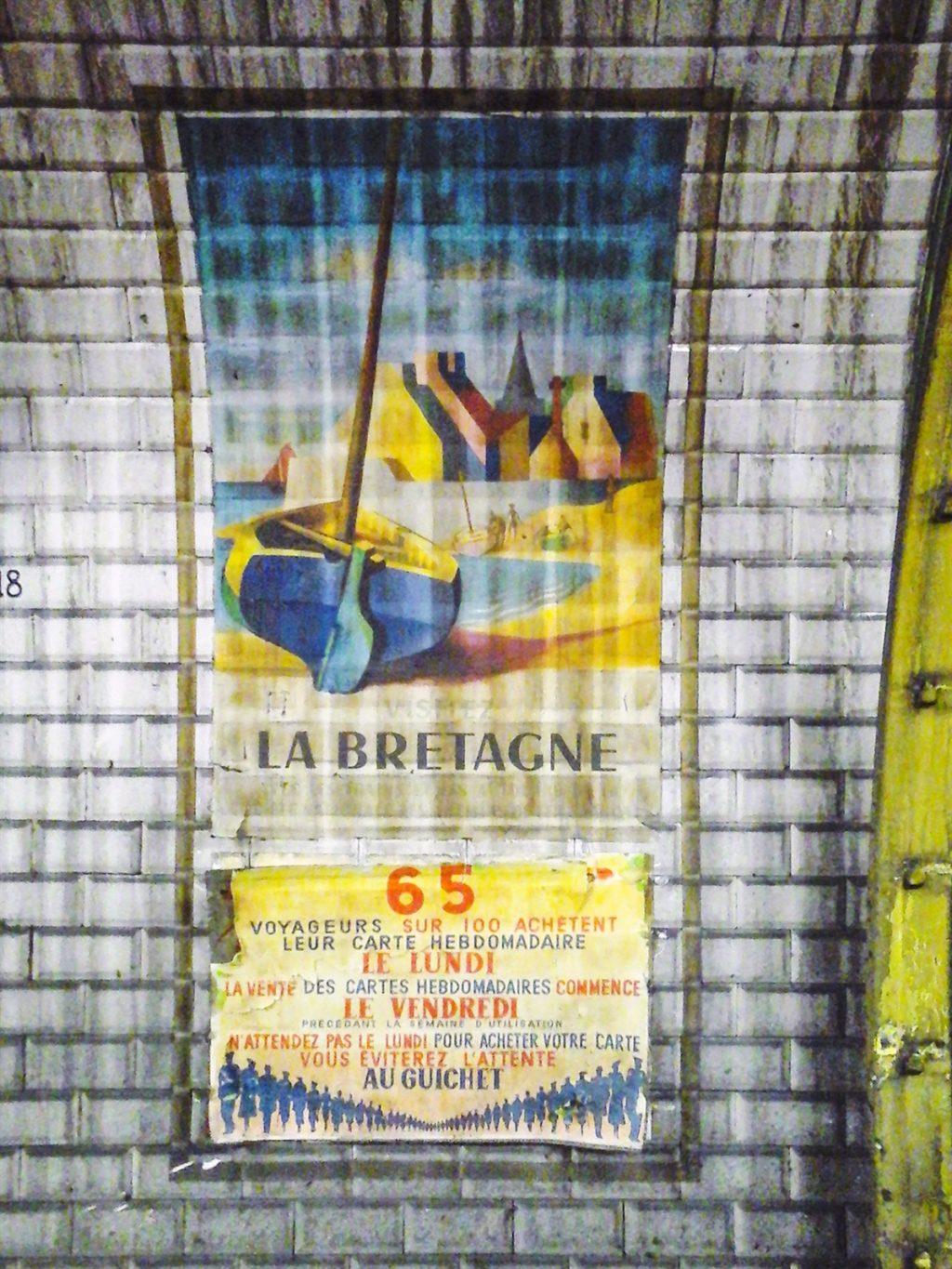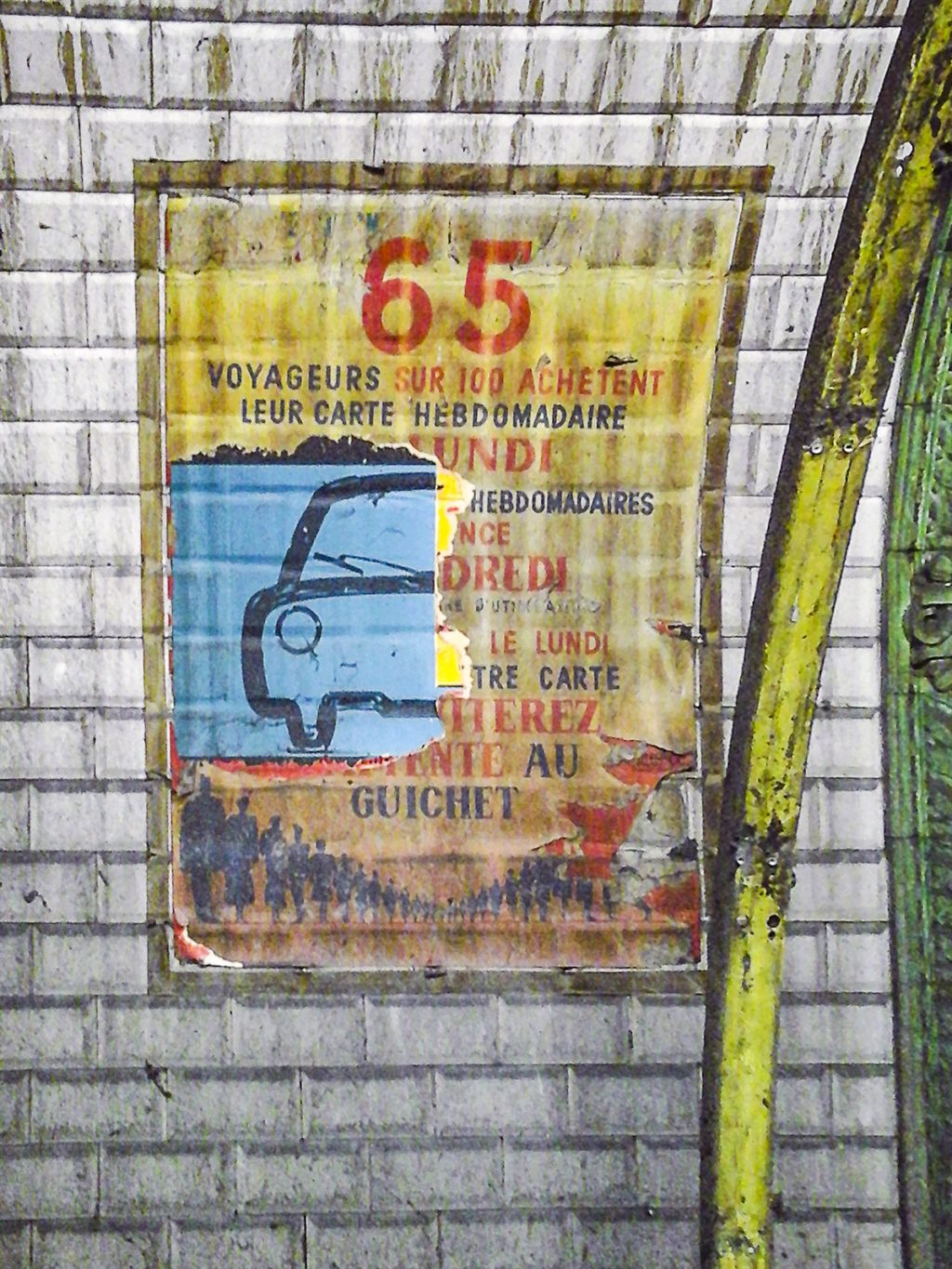29 Dec 2021
Advertising Time Capsules in Paris and London
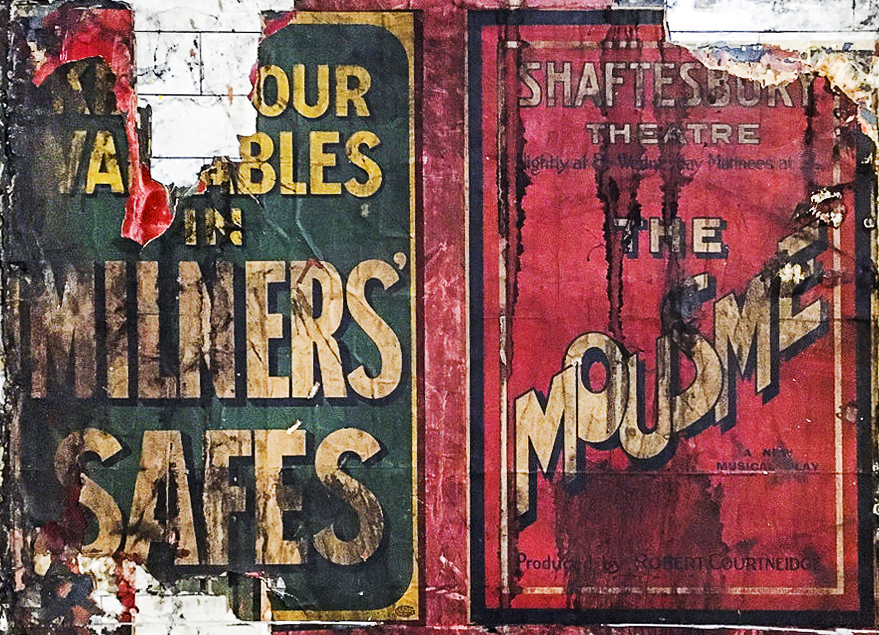
“It is possible to resent the ‘trespassing’ of today’s billboards and graffiti, while also celebrating the reappearance of fifty-year-old advertising. When disused tunnels were recently reopened on the London Underground, they revealed time-capsuled posters from the 1960s and 1970s, provoking delight among many.”
Ghost Signs: A London Story
The above quote is from the ‘Sign Protection’ chapter of our book where we explore how the passage of time can change the perceived value of advertising in the public realm. The posters referred to were found at Euston Station, but the topic of these advertising time capsules underground cropped up again recently. This was with reference to a Paris Metro station, and this tweet from Tim Mc Inerney was shared with me by many.
This led to more fascinating replies and here I have collated material shared in response to my idea of a blog post. There’s more from Tim Mc Inerney towards the end, but first we’ll hop back across the channel for the first instalment in West London.
Advertising Time Capsules at Notting Hill Gate
Mike Ashworth was the Design & Heritage Manager at London Underground in 2010 when work was being carried out at Notting Hill Gate. In the process, contractors discovered a long-disused passageway. Although this wasn’t an uncommon occurrence, Ashworth notes that, “what made this discovery different was that sealed up in the disused space was a gallery of original advertising posters, dating from between 1956 and 1959”.
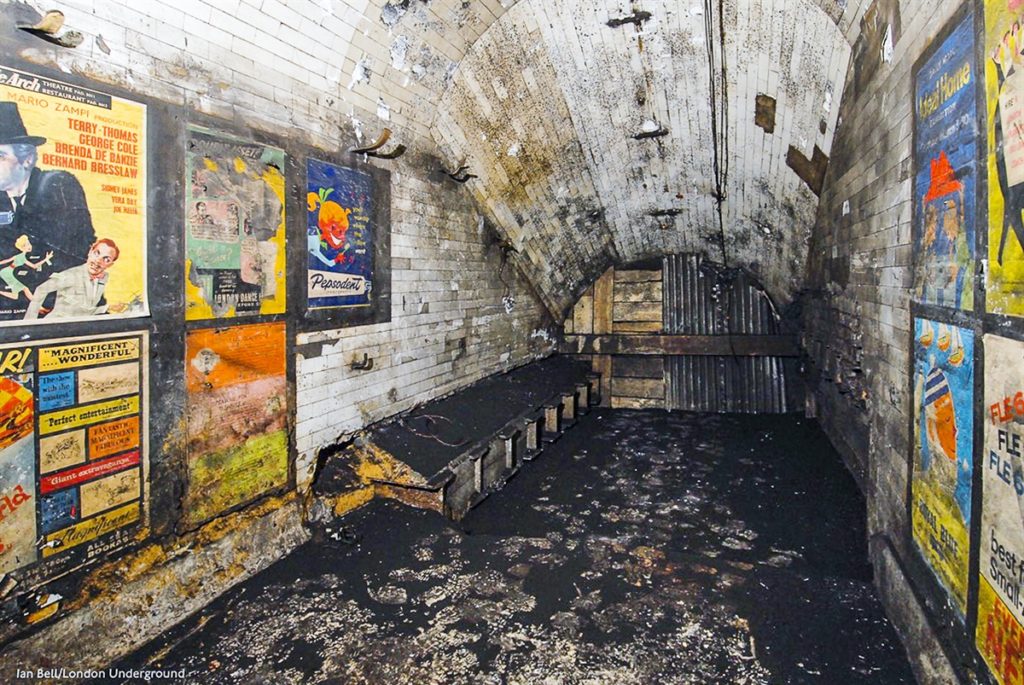
Ashworth continues:
“The first glimpse of this strange, still place was astonishing. On other stations old posters survive but rarely in such numbers and in such surprisingly good condition. The colours were still vibrant and the lettering, ranging from the well-behaved to the garish, still stood out as clear as when last seen by the eyes of passengers. The posters ranged from those issued by London Transport itself to consumer products – all presented in the then-standard pasted format of grouped banks of posters on black paper background frames. As well as these there was a superb series of film posters of varying design styles.”
Mike Ashworth, former Design & Heritage Manager, London Underground
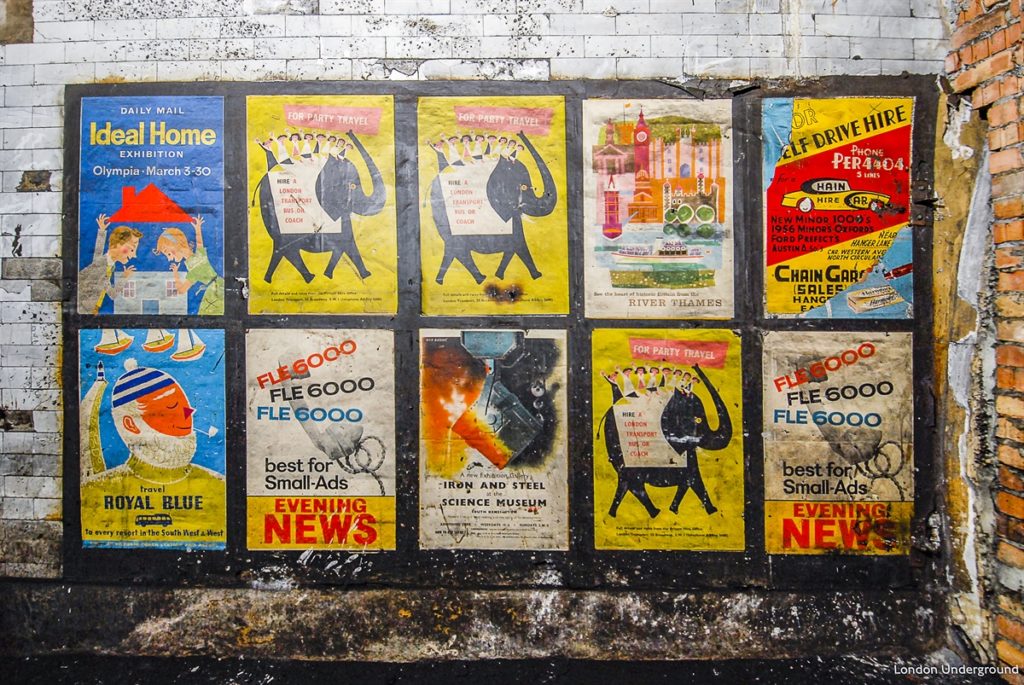
Following their discovery there were discussions of what to do with these Pompeii-esque remnants of advertising past. Removal was an option, albeit expensive and time-consuming. Another would have been finding a way to make the space accessible for viewing. Ashworth had concerns about the former as that would displace them from their original context, and the latter would run the risk of damage or poor maintenance. For Ashworth, their survival “as they were designed to be seen” was an important aspect of their discovery. This subsequently guided the decision to re-seal the space and leave it there for a future generation to discover once again.
Ashworth cautions that you shouldn’t ask staff if you can see the posters: “They are obviously entombed and I doubt anyone can recall which sign or even which platform they are on – so, just enjoy the poster ghosts of the past in these images!”
(Captions below taken from Mike Ashworth’s research, with an even older discovery to follow.)
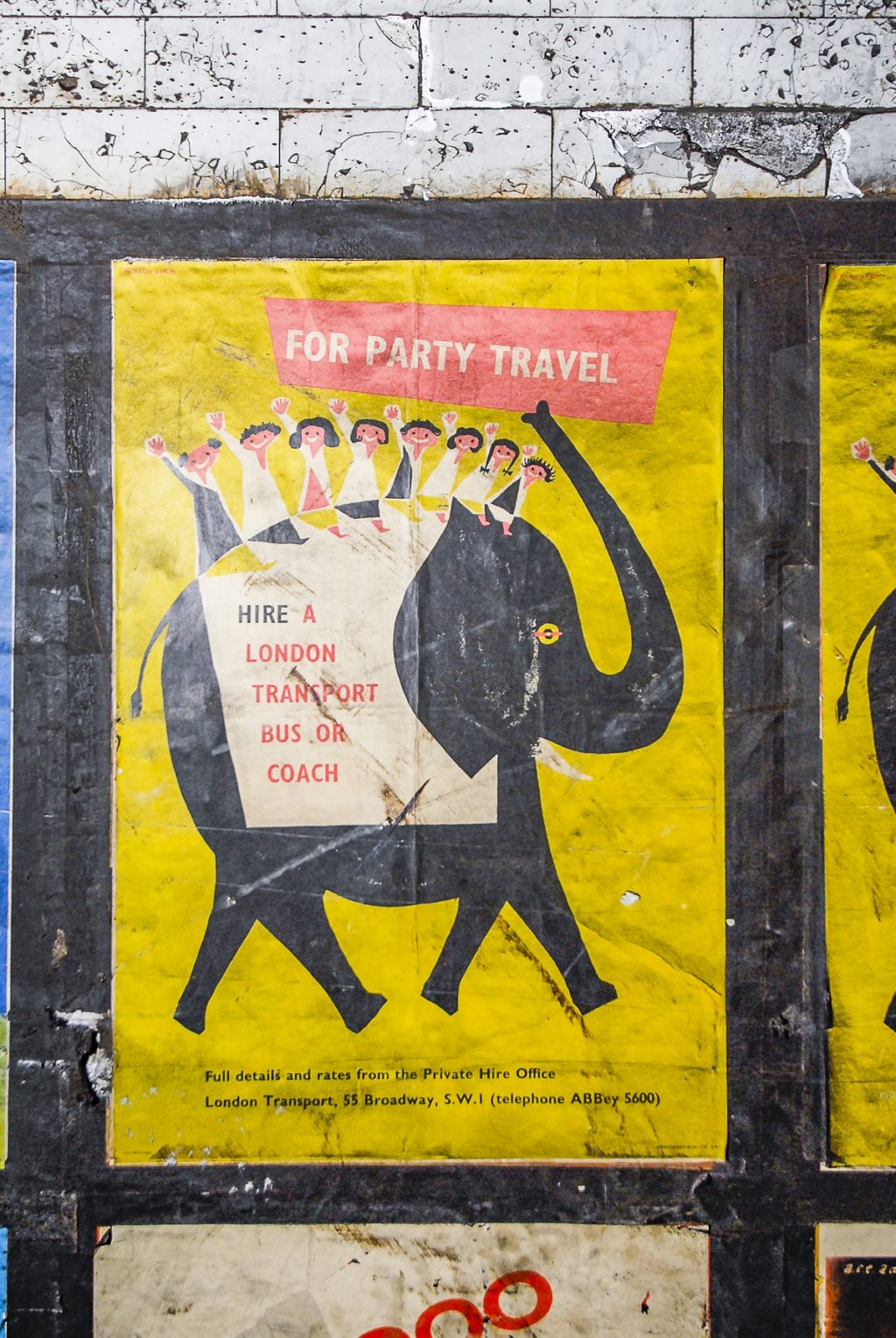
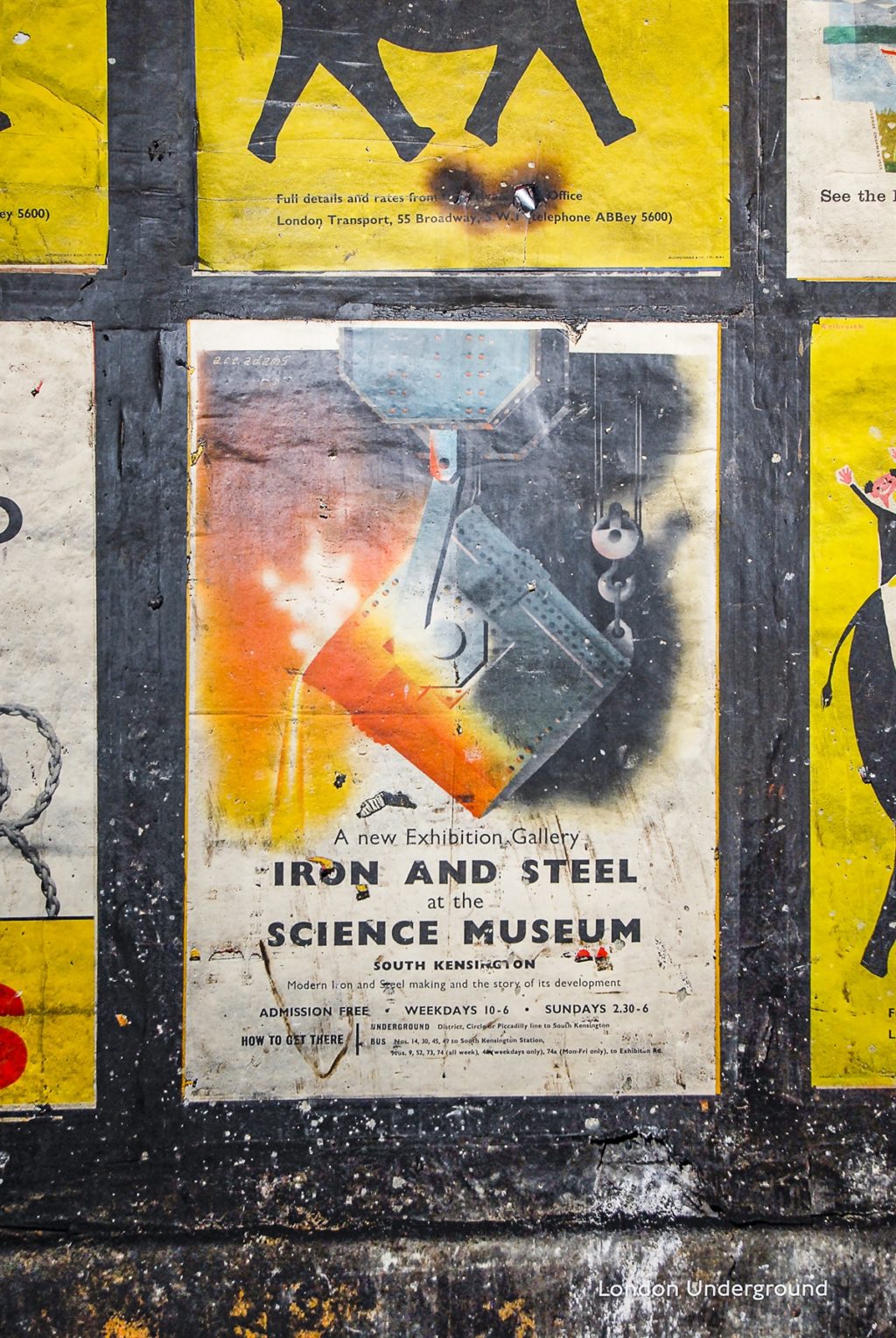

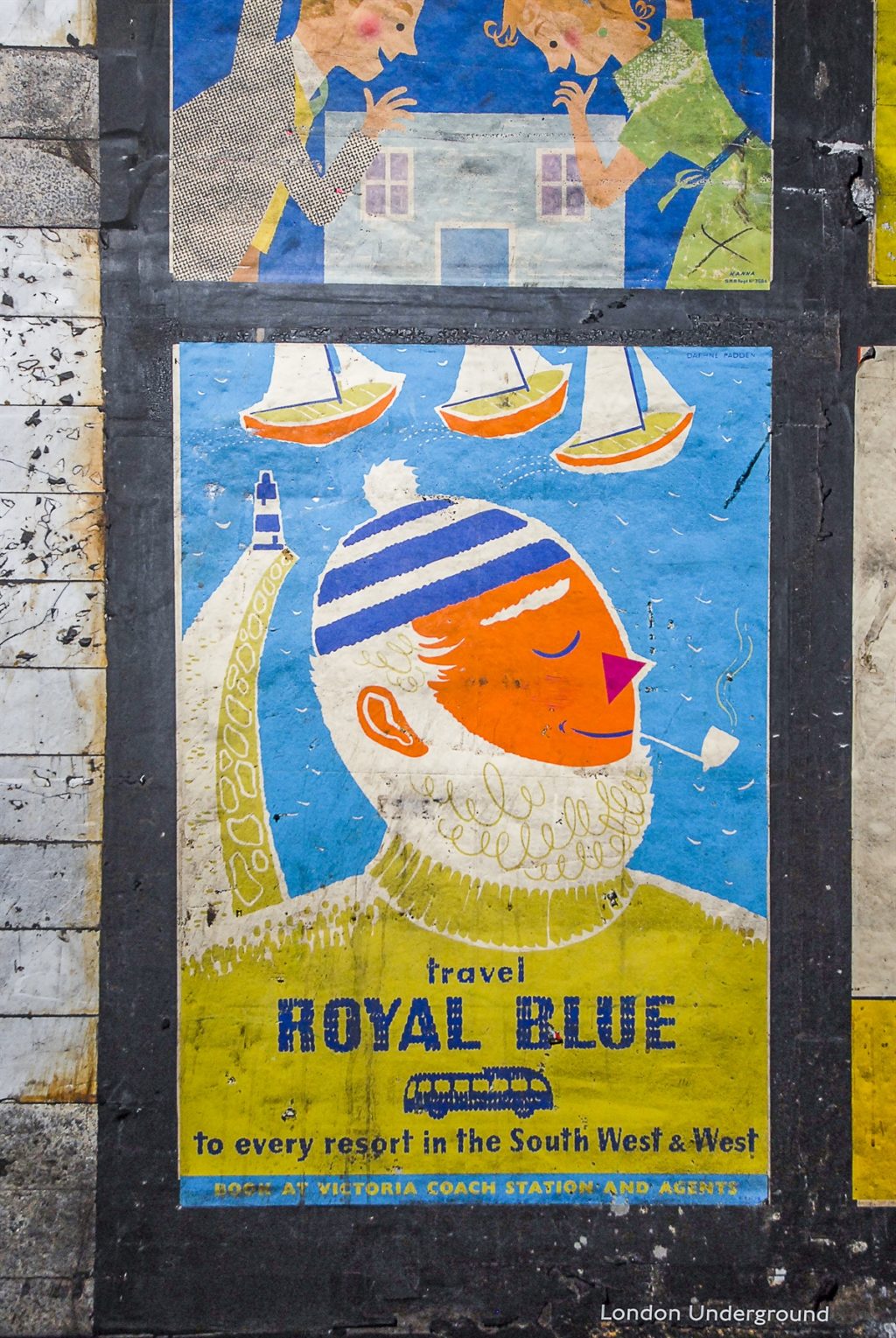

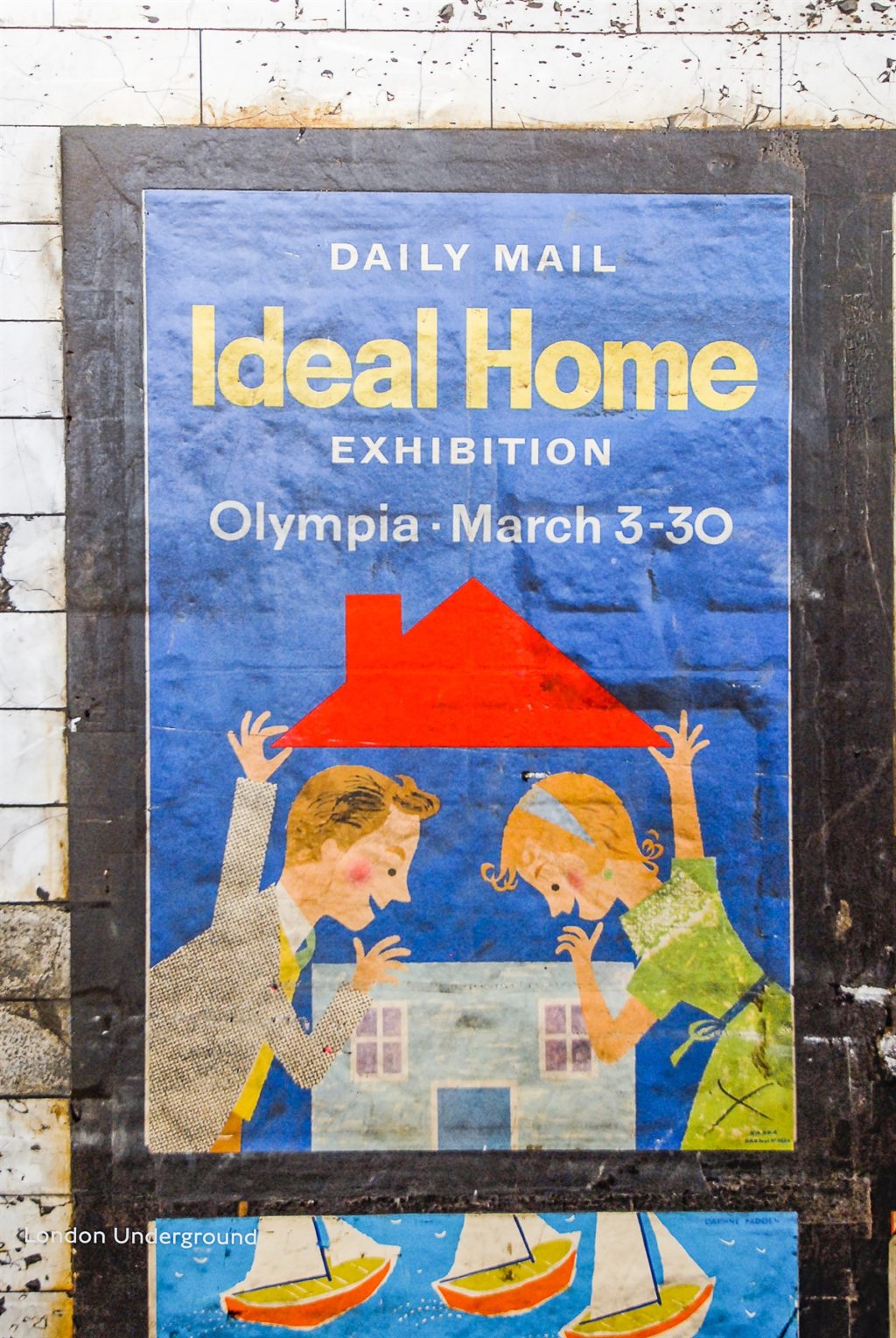
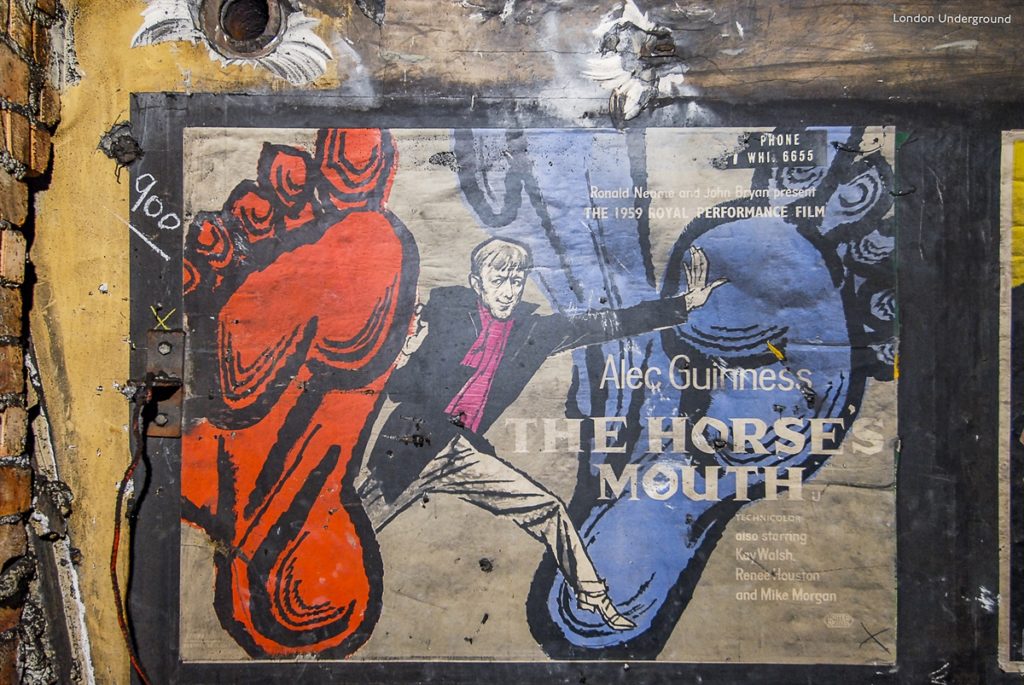
Holland Park
Just one stop further along the Central Line at Holland Park, some more discoveries were made during works. Rather than the dedicated poster spaces at Notting Hill Gate, these were pasted directly onto the glazed bricks. They have once again been covered by modern signage, awaiting a subsequent reveal.
The theatrical one dates these to almost 50 years earlier than those above, as detailed in Mike Ashworth’s captions.
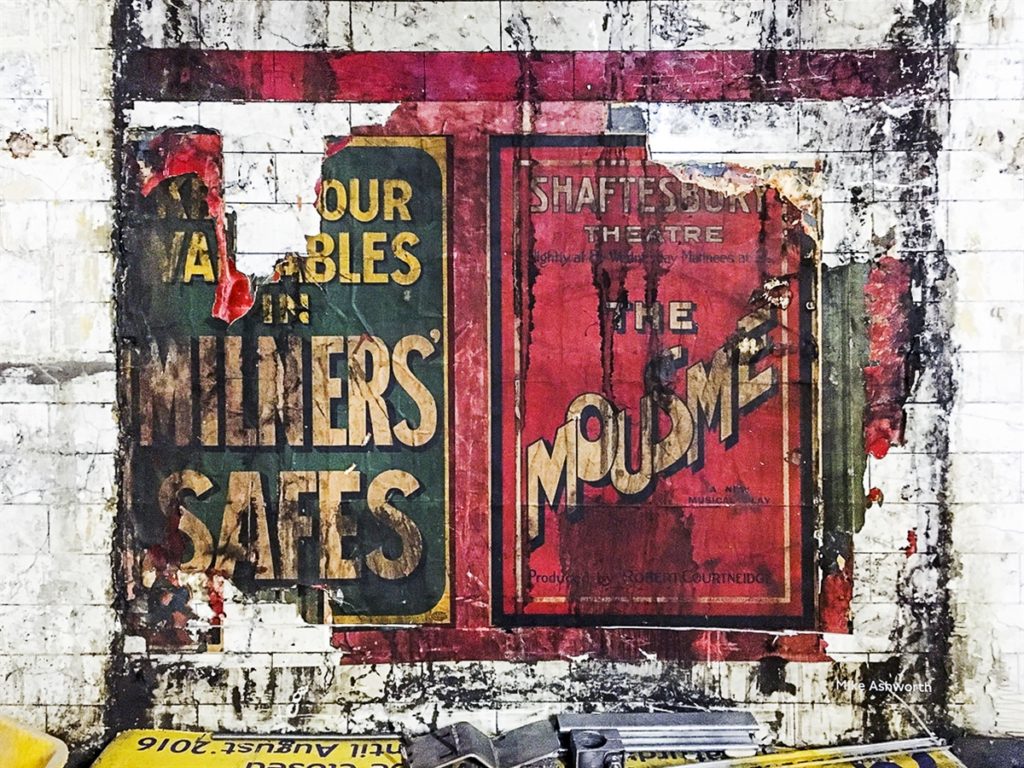

Advertising Time Capsules at Trinité–d’Estienne d’Orves
Here are some highlights from the twitter thread, photographed by Tim Mc Inerney. He was fortunate to have jumped off the train when he spotted them, as later in the day when he returned they were no longer there. As with many of those at Notting Hill Gate, these date from 1959.
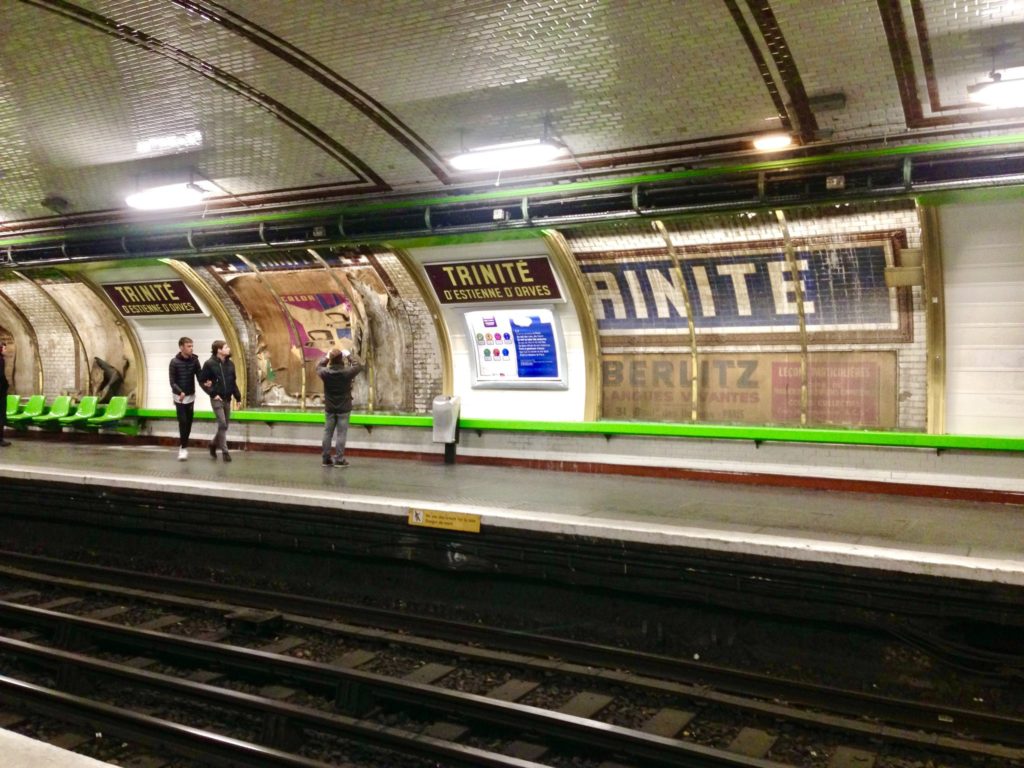


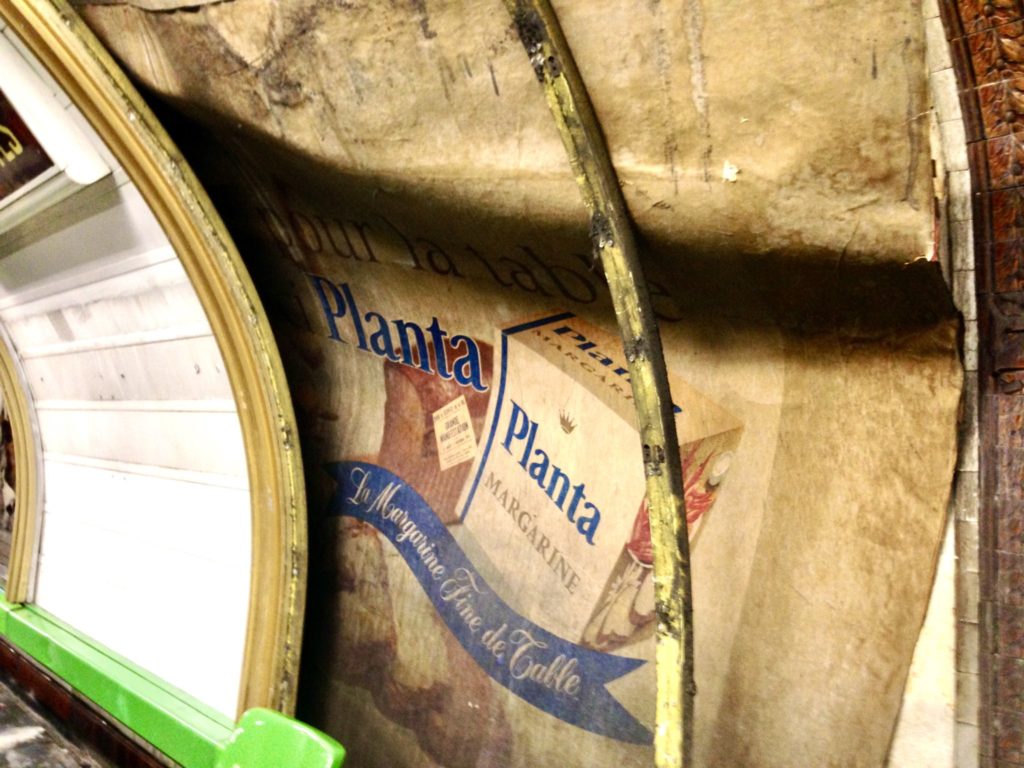
Marcadet-Poissonniers
Just one year before the reveals at Trinité–d’Estienne d’Orves, something very similar occurred at Marcadet-Poissonniers. These images were captured in November 2014 by Eric Darvoy aka Pixdar, author of ‘Sur les traces d’un passé urbain‘. They include a mixture of commercial advertising, and posters for the RATP (Régie Autonome des Transports Parisiens) which manages the city’s public transport network.

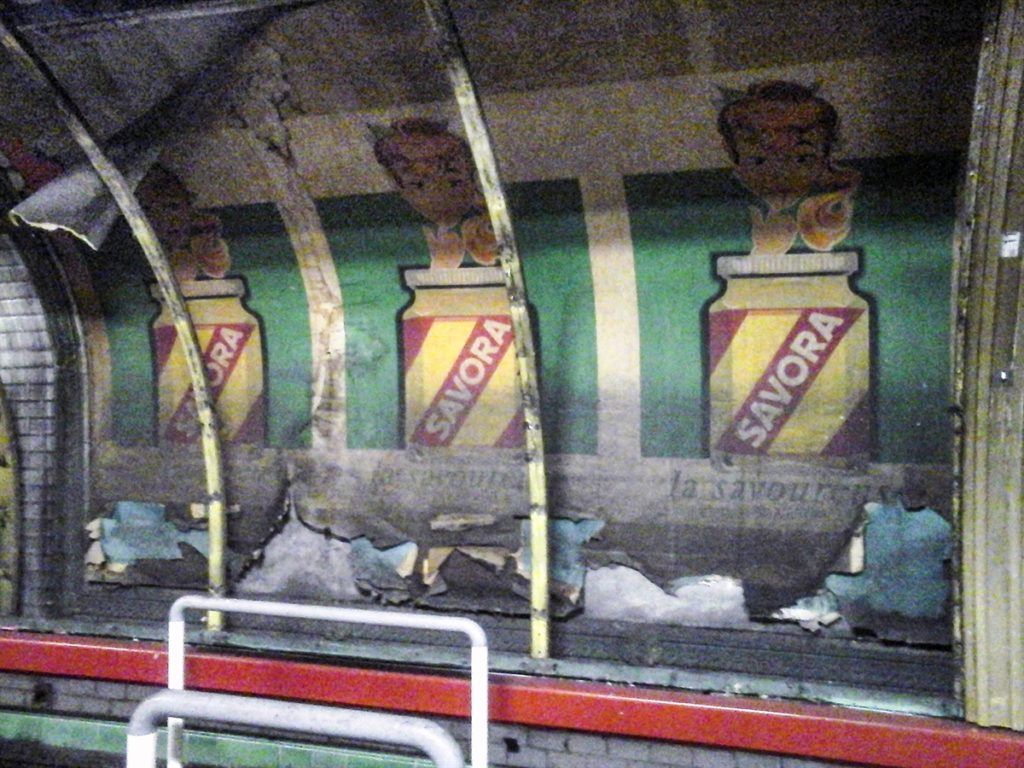
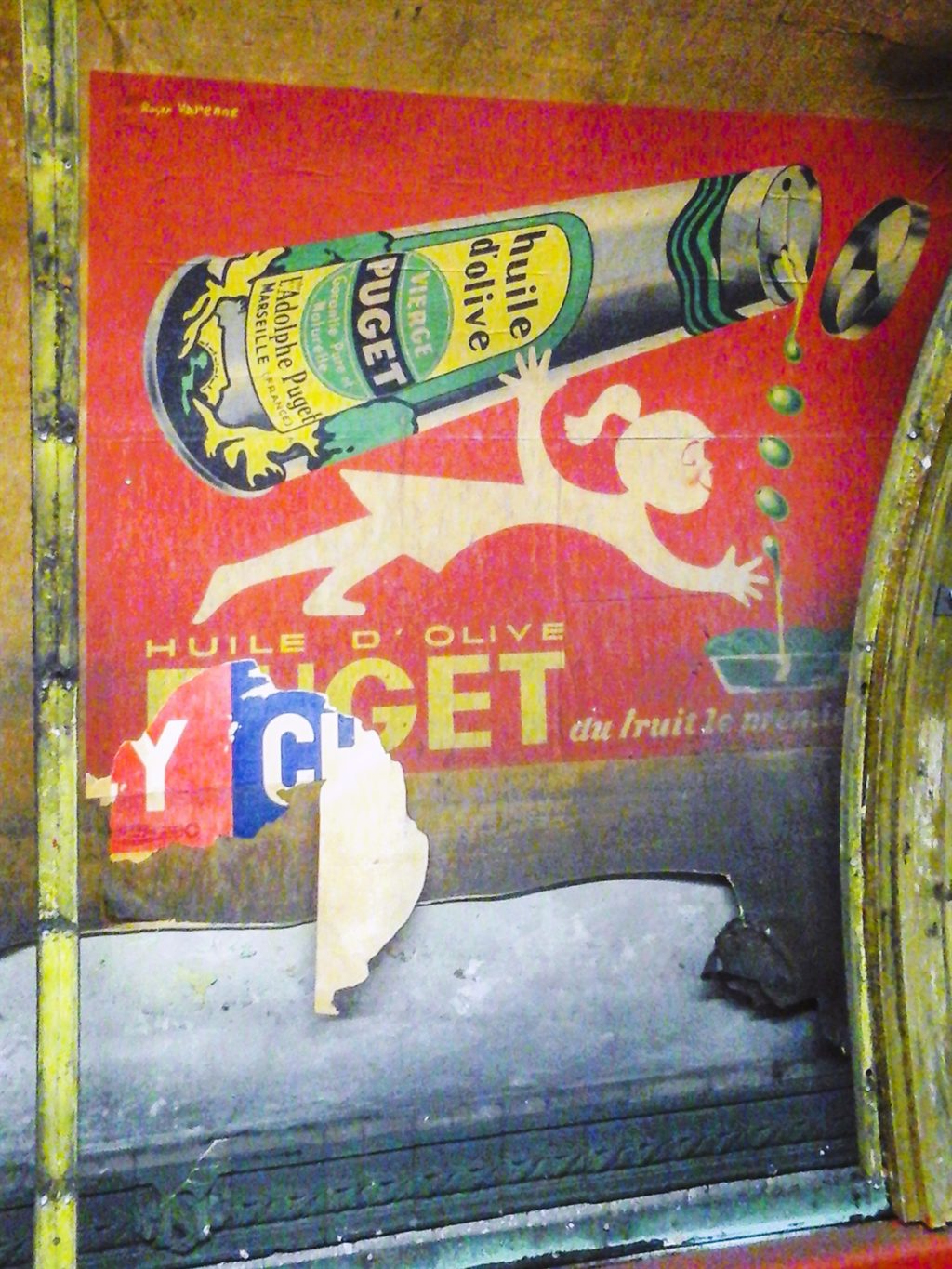
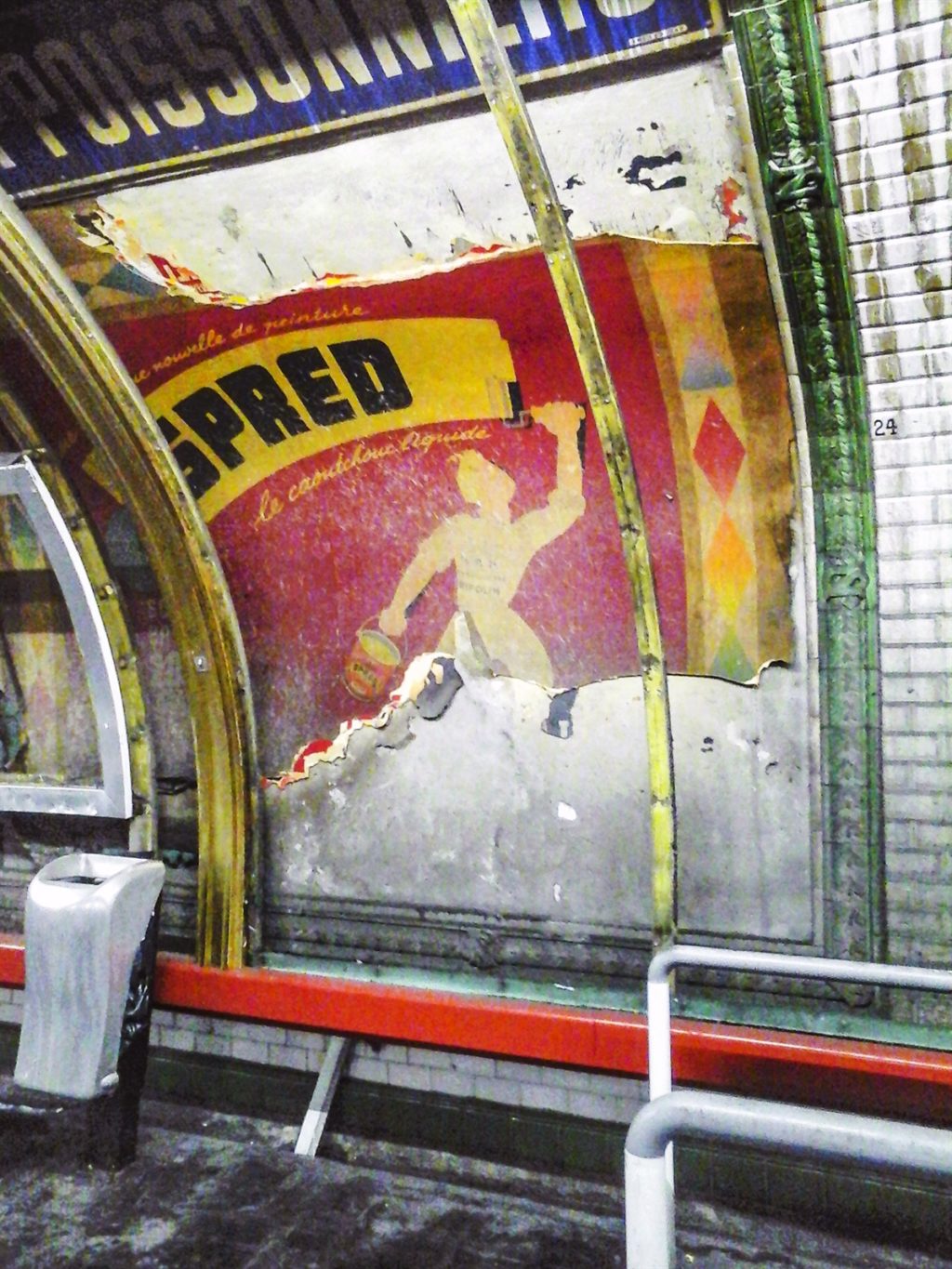
The Shifting Sands of Opinion and Time
Returning once again to our discussion of fading painted signs in the book:
“Public opinion is also in flux. When they were first painted, the signs were seen as garish and adding to the commercial clutter of the street. Similar views are held about today’s billboards, although these aren’t new: in 1960 the American adman Howard Gossage referred to billboards as ‘trespassing on your field of vision’… The passage of time no doubt affects these shifts in opinion.”
Ghost Signs: A London Story
While we marvel at these seventy-year-old (and older) posters, it would be interesting to know what their contemporary passengers felt about them. And indeed,what those in 2090 might think about survivors from today’s outdoor advertising…
With thanks to Mike Ashworth, Eric Darvoy and Tim Mc Inerney for their kind permission to reproduce these photos on the blog.

